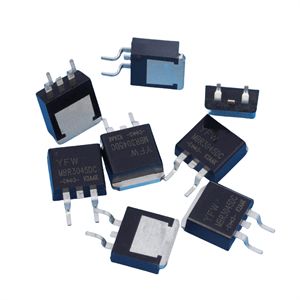Date:2024-11-29 Categories:Product knowledge Hits:401 From:Guangdong Youfeng Microelectronics Co., Ltd
Heating is a common process in many industrial and household applications, which can be used for various purposes such as cooking food, processing materials, and heating water. Due to different applications requiring different temperatures and control methods, thyristor technology is needed. This article will provide a detailed introduction to the application and principles of thyristors in heating.
The Application of Controllable Silicon in Heating
1. Electric furnace control
The application of thyristors in electric furnace control is very extensive. Usually, electric furnaces need to control the current to achieve heating, and thyristors can control the magnitude of the current, so they are widely used in electric furnace control. By combining thyristors with resistors and capacitors, precise current control and power regulation can be achieved.
2. Power regulator
A power regulator is a device that can regulate the output power of electrical equipment. Controllable silicon can control its conduction and cutoff states through gate voltage, thereby controlling the output power of the circuit. This technology is widely used in various household appliances such as variable frequency drives, AC speed controllers, air conditioners, water heaters, etc.
3. Communication electric furnace
AC electric furnace refers to equipment that uses AC power for heating. Due to the large amount of electricity required for AC electric furnaces, precise current regulation is necessary, and thyristors come in handy. By controlling the conduction and cutoff states of thyristors, precise control of AC electric furnaces can be achieved.
4. Electric arc furnace control
An electric arc furnace is a device used for high-temperature heating, which works by passing current through electrodes to heat materials. The application of thyristors in electric arc furnace control is also very extensive. By adjusting the conduction angle of the thyristor, the power output of the electric arc furnace can be precisely controlled, ensuring that heating is not excessive.
The advantages of thyristor in heating
1. Strong controllability
Controllable silicon can achieve precise control of the heating process by controlling the magnitude and direction of the current through the gate. This makes the thyristor highly controllable during heating. By adjusting the conduction angle and current magnitude of the thyristor, the speed and temperature of the heating process can be precisely controlled.
2. High temperature resistance
Controllable silicon is a semiconductor device that has excellent high-temperature resistance compared to other conductor materials. This allows thyristors to withstand high-temperature heating environments without experiencing performance changes due to temperature fluctuations.
3. Long lifespan
Controllable silicon has a long lifespan and can work for decades without any damage or performance degradation. This makes thyristors very suitable for long-term stable heating processes in industrial applications.
4. Low cost
Compared with other control devices, the production and manufacturing costs of thyristors are relatively low. This makes thyristors highly competitive in large-scale applications.
summary
Controllable silicon is a widely used technology in heating control. It has the advantages of strong controllability, high temperature resistance, long service life, and low cost, and can achieve precise control of the heating process. In the future development, thyristor technology will continue to play an important role in industrial and household applications.

Previous: Classification, Structure, and Principle of MOSFET